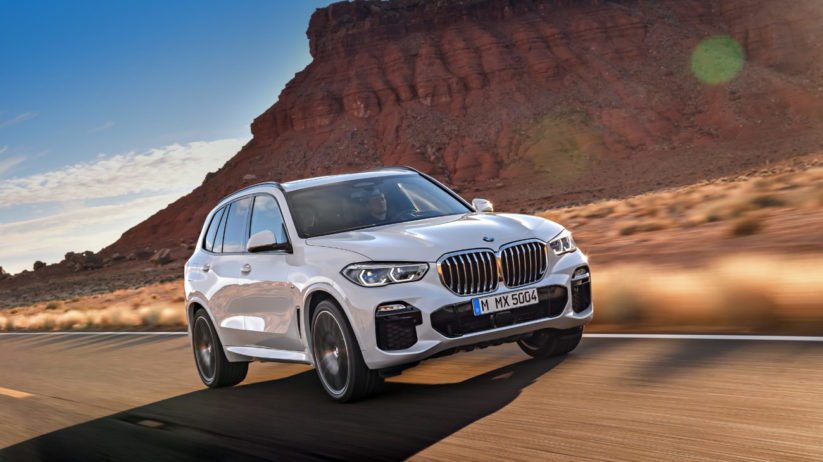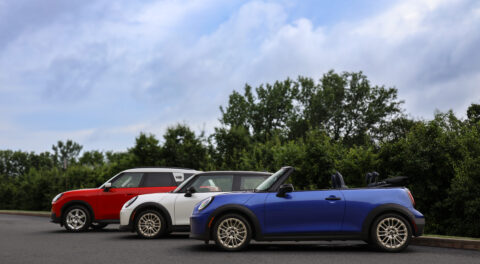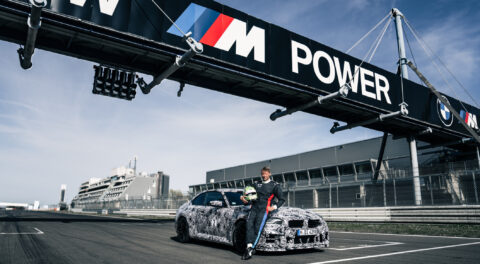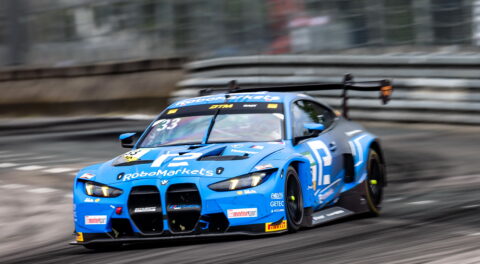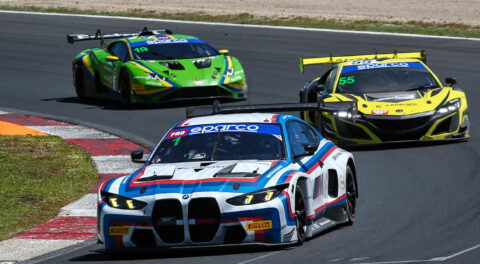Just recently, BMW was still readily stoking rumors of the next-generation X5 with photos of prototypes wrapped in camouflage while undergoing testing in remote and rugged locations. Now, less than two whole weeks after the last announcement, a production-ready version has been revealed for the entire world to see. Rumored to carry the G05 internal designation, the 2019 BMW X5 replaces the outgoing F15 example, which began production back in August 2013.
The new model is the fourth generation in a line that kicked off BMW’s foray into the the SUV world—a move that has since spawned an entire range of options, from the entry-level X1 to the upcoming X7. Styling uses new design cues that have been filtering down from concepts and other new models, while an array of fresh technology—much of it debuting in a production model—is also deeply integrated.
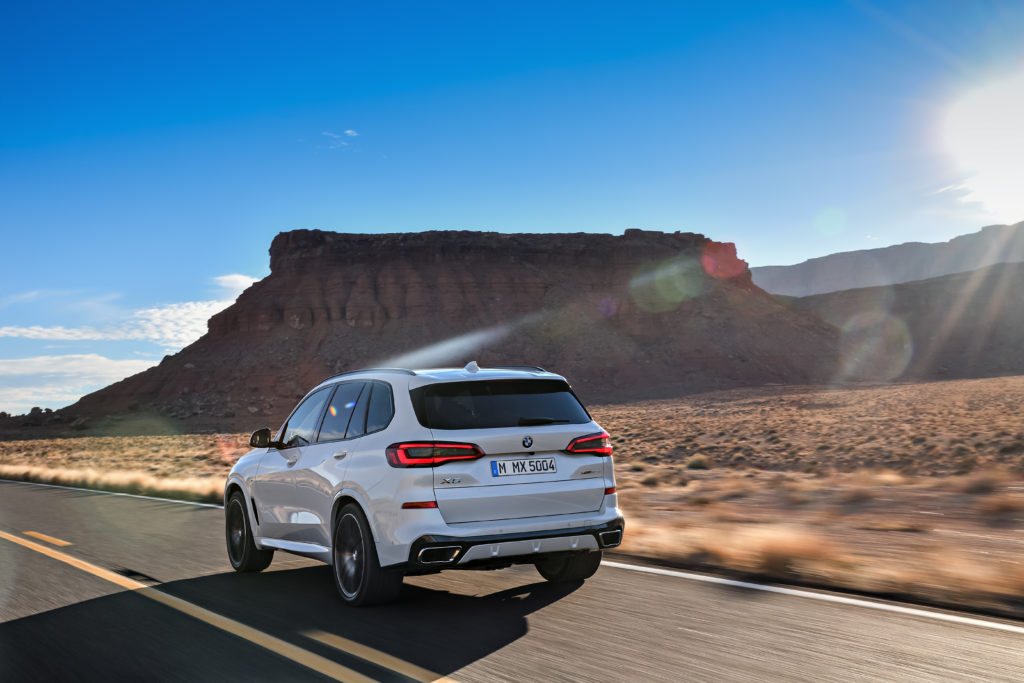
The exterior design of the preceding three generations of X5 was a well-executed, conservative evolution; the SAV grew and changed along with other contemporary BMW production models. E53, E70, and F15 X5 generations all seemed well suited to the period in which they were introduced, and the latter two of the bunch still seem quite fresh, even as the world has transformed around them. But while the X5 once followed other BMW design directions, now it seems to becoming something of a style leader. Large, single-piece kidney grille surrounds display the direct influence of the Concept X7 iPeformance, and adaptive LED headlights are standard, while the optional BMW Laserlights with blue X-shaped elements make for even more eye-catching visuals. Illumination on the rear is all LED, with tail lamps that extend well into the side fenders.
The traditional X5 SAV silhouette has been largely retained, but important elements of the design are new. The X5 has always used rather dramatic creasing in its hood sheet metal, but the fourth generation takes things a step further with angular sculpting. Wheel wells also follow what BMW refers to as a “lightly hexagonal” shape, which seems to work well in conjunction with the progressively sloped roof line. Bulging fenders lend an athletic appearance that doesn’t seem like it’s spent too much time in the gym—wait for the M version!—and long-term X5 fans will appreciate that the split tailgate has been retained.
According to Adrian vanHooydonk, Senior Vice President BMW Group Design, the new generation of BMW’s longest-running SAV pays homage to its ancestors while broadcasting an unmistakable tone of “presence and modernity,” which “defines a new X design language—robust, clear and precise.”
Wheel options range from standard nineteen-inch light-alloy options, with M Sport bringing a set of twenty-inch M wheels to the build sheet. Upsized 21- and 22-inch designs are also optionally available. Overall, things have grown, but only slightly, with increases that measure an average of 1.5 inches for exterior length, width, and height.
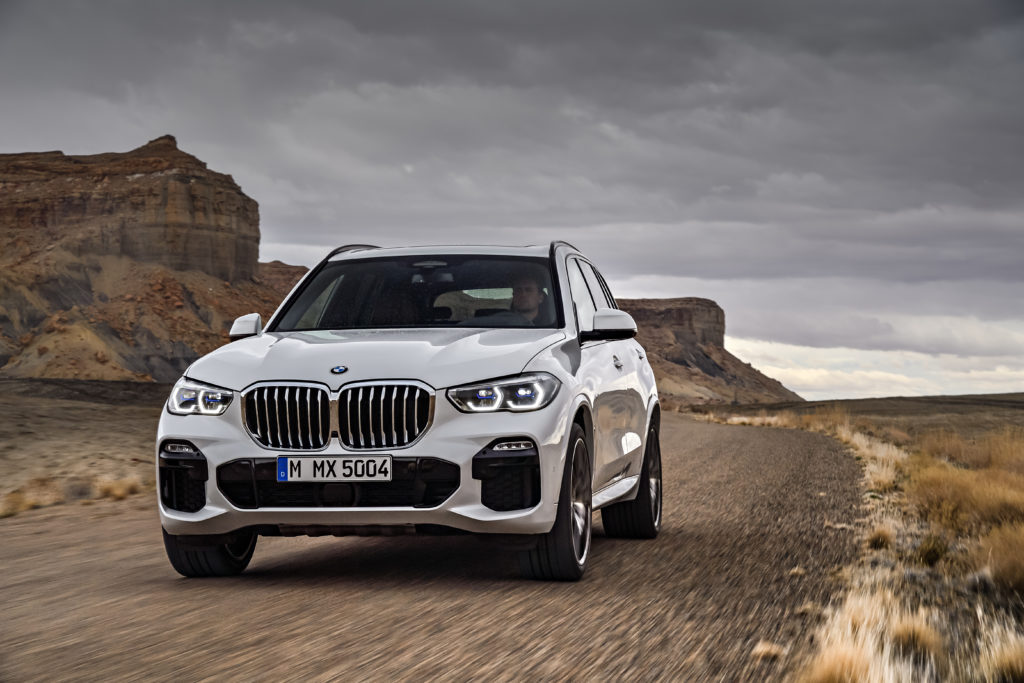
The changes aren’t purely aesthetic, however; BMW seems to be paying serious attention to the development and integration of a series of new drive-related technologies in 2018, and the new SAV was by no means spared from the treatment. The G05 X5 is the first BMW X model to come available with an optional off-road package: Along with two-axle air suspension, which uses an individual air supply with its own reservoir and compressor for each wheel, the new option group also comes with underbody protection and specialized graphics for the iDrive and instrument displays. Most important, a button is added to the center console which enables the selection of different drive modes for a range of surfaces like snow, sand, gravel, or rock, automatically selecting the ideal settings relating to ride height, xDrive, throttle response, the transmission, and of course Dynamic Stability Control (DSC).
There’s also Dynamic Damper Control for comfort or sport-oriented driving modes, along with Integral Active Steering, which allows the rear wheels to turn slightly for increased maneuvering in tight spaces and added stability at freeway speeds (as usual, Roundel editor Satch Carlson insists that you really, really want this option). An electronically locking rear differential is another availability—you want that one, too—which customers can spec on their vehicles by choosing either the Dynamic Handling or Off-Road package. Everything works either at the touch of a button or the tap of a screen, while a good number of the systems are designed to work autonomously as conditions dictate; when a driver is in sport mode, for example, and driving at a speed upwards of 86 mph, the air-suspension ride height automatically drops by 0.8 inches.
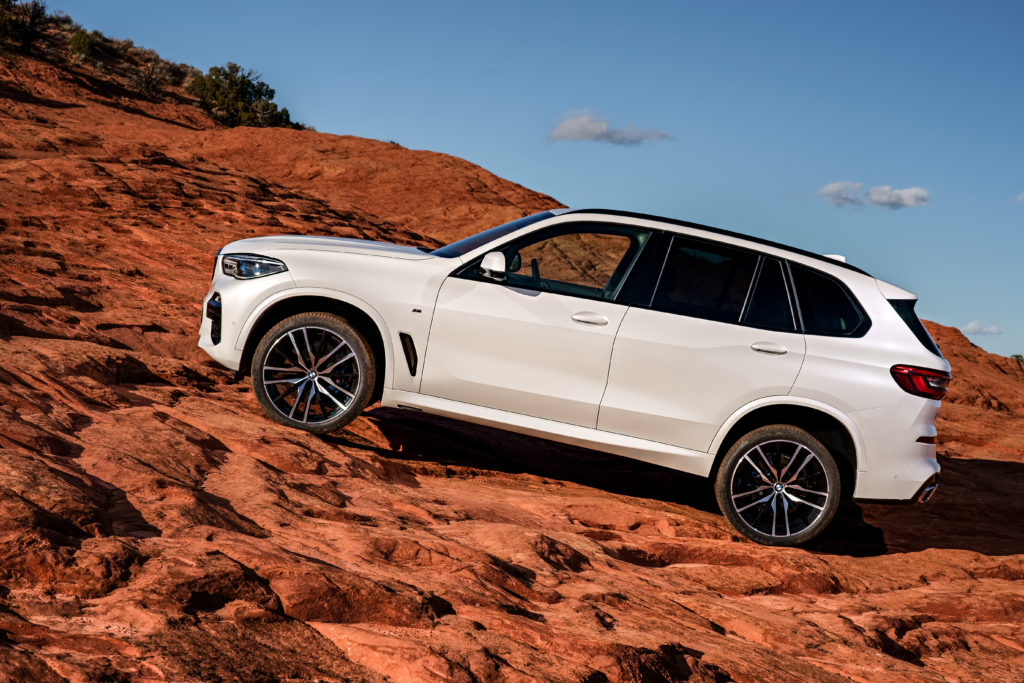
Every generation of X5 has used upmarket materials and technology similar to what’s found in the 5 and 7 Series. The entire current lineup seems to be benefitting from greater attention paid to cabin materials, layout, and ergonomics, and the new X5 seems to continue this trend. In addition to the newest version of iDrive, which is discussed below, ambient lighting, a new shifter and center-console control panel come together with fine materials and well-chosen colors; most will find it a nicer cabin than on any previous generation. Seats show hints of the same stitching pattern that’s currently being used on the 7 Series, while upholstery choices have been expanded to include Vernasca leather, with extended Merino also available.
M Sport-equipped versions will use interior trim called Aluminum Tetragon, but more pedestrian xLine models will still come standard with illuminated door sills. Standard ambient lighting is quite impressive on its own, but Dynamic Interior Light is also available, which adds pulsating signals for instances such as door-ajar warnings and incoming phone calls. A new layout for climate controls is also visible, which appears stylistically similar to the Driver Experience Control switch and suspension controls which surround the new shifter.
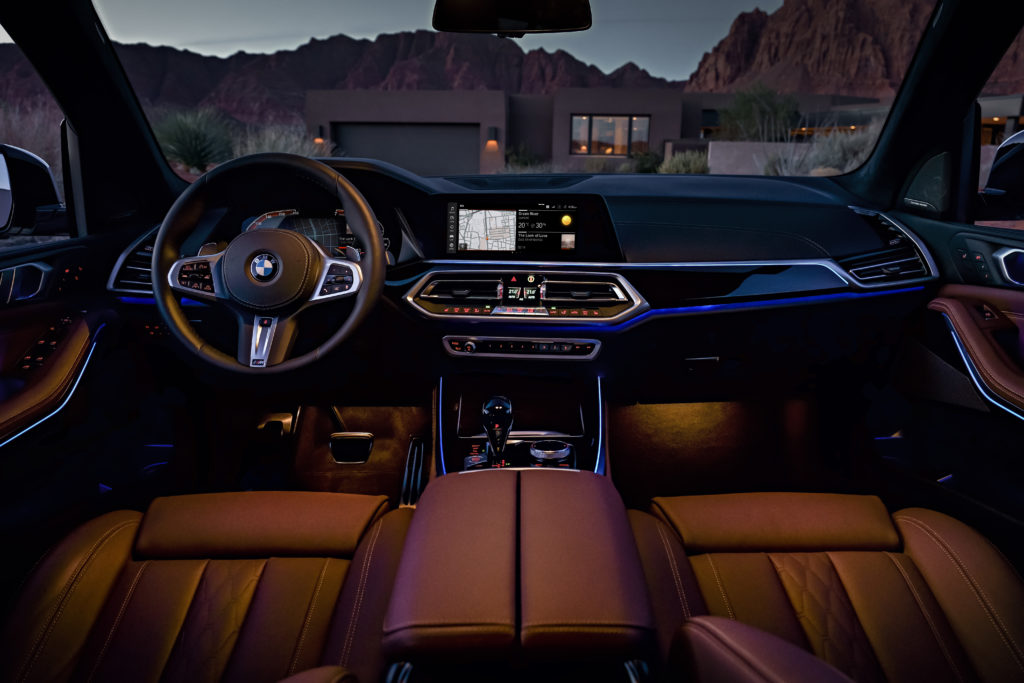
As we reported last month, Operating System 7 is coming to fruition this year in a number of vehicles, and the gorgeous new screens are on full display in the new X5. One of the most important elements of this new system is its ability to change appearances depending on the selected driving mode. Just a few generations of BMW models back, the only control the driver had over the instruments and other displays was found in a dimmer switch for lighting. Today, the seventh generation of iDrive is fully integrated with the main gauge cluster, which is now completely digital. Color schemes, instruments, and readouts all change between eco and sport driving modes, and are also flexible between conventional vehicles and those with electrified drivetrains. The all-new off-road package gets its own unique display skins and graphics, while as a whole, the entire the look and feel of the new tech just seems more refined than that of competing offerings from other high-end manufacturers.
An aurally immersive experience is also available, via the optional Bowers & Wilkins Diamond Surround sound system. Featuring twenty speakers with total output of 1,500 watts, the ultra-premium audio package should sound excellent, owing not only to the hardware, but also to the interior acoustics of the X5. Another experience related-option is the Professional rear-seat entertainment system, which makes use of twin 10.2-inch full-HD displays for rear-seat occupants (the displays are also integrated with iDrive).
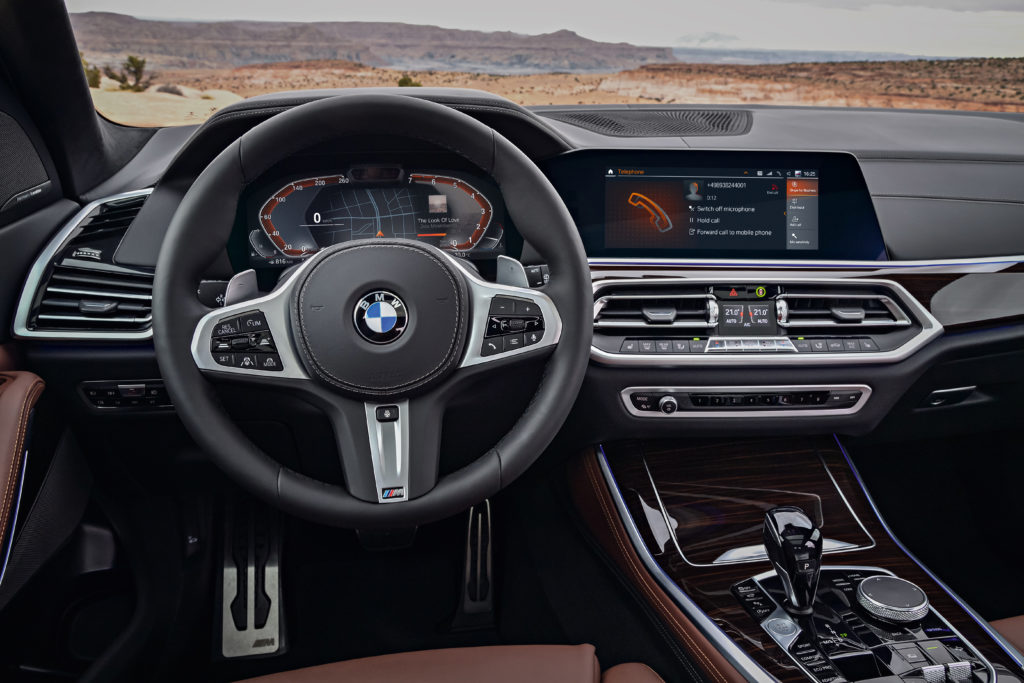
Two different drivetrain choices have been announced, one with six cylinders and another with eight. Performance between the two appears quite close, with the turbocharged B58 inline-six powered X540i producing 335 horsepower between 5,500 and 6,500 rpm with 330 pound-feet of torque plateauing from 1,500 to 5,200. Those figures equate to a factory 0–60 time of 5.3 seconds, which is impressive, considering that the X5 tips the scales at 4,813 pounds.
For the N63 V8-powered X550i, things are proportionately increased, with 456 horses available between 5,250 and 6,000 rpm and 479 pound-feet of torque arriving at 1,500 and sticking around until 4,750. Weight is up to 5,170 pounds, but the 0–60 time drops to just 4.6 seconds. Both power plants are mated to ZF eight-speed automatic transmissions, each with specific gearing, and both are rated to tow up to 7,209 pounds when equipped with the factory hitch.
Very few could have predicted the success BMW would enjoy subsequent to the launch of the first X5 some twenty years ago. Today, even with market trends seeming to favor crossovers in a myriad of sizes, the X5 appears to remain just as important as it always was. Popularity of the SAVs doesn’t seem to be declining, either, as sales of the X2, X3, and X5 helped achieve total U.S. X-vehicle growth of 52% last month. What’s even more impressive is the fact that the X2 and X3 are both new, while the currently available X5 is the same generation that debuted for 2014.
Since the E53 came out in the late 1990s, BMW has sold more than 2,200,000 X5 SAVs, over a quarter of which were destined for U.S.-based customers—citizens of the same country that is home to the Spartanburg, South Carolina, manufacturing facility responsible for building them. With aggressive new looks, an array of impressive new tech, and plenty of power to back it all up, the upcoming 2019 X5 is well suited to continue the same story of success.—Alex Tock
[Photos courtesy of BMW AG.]

